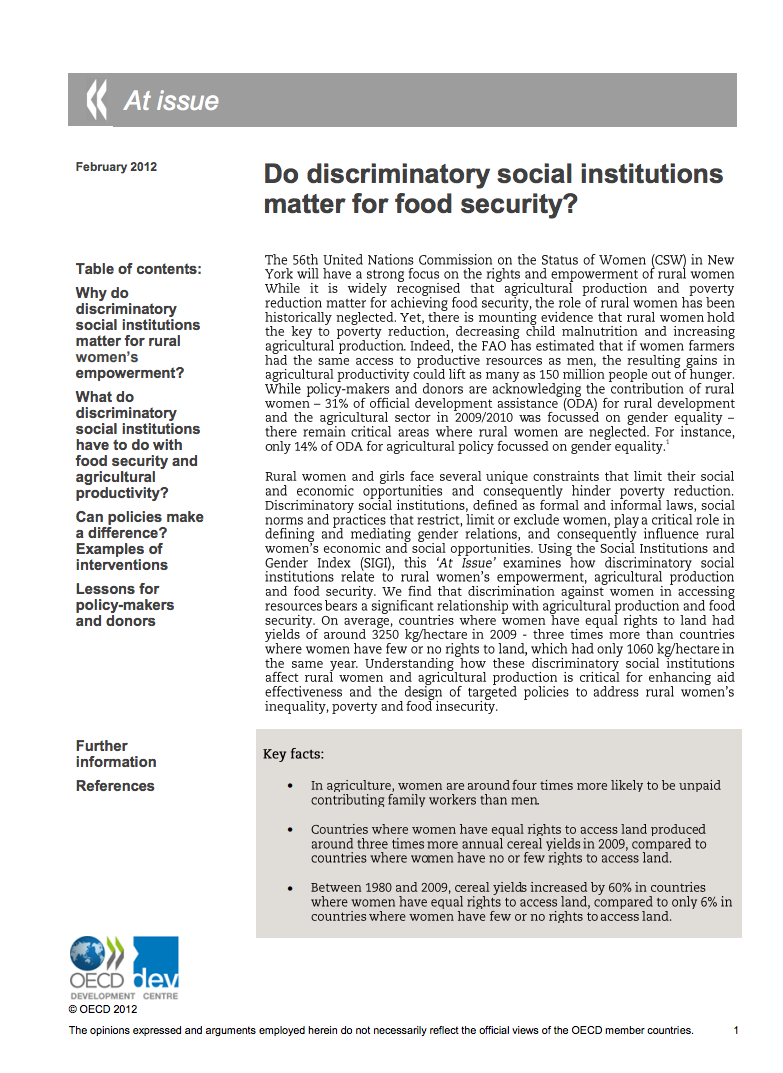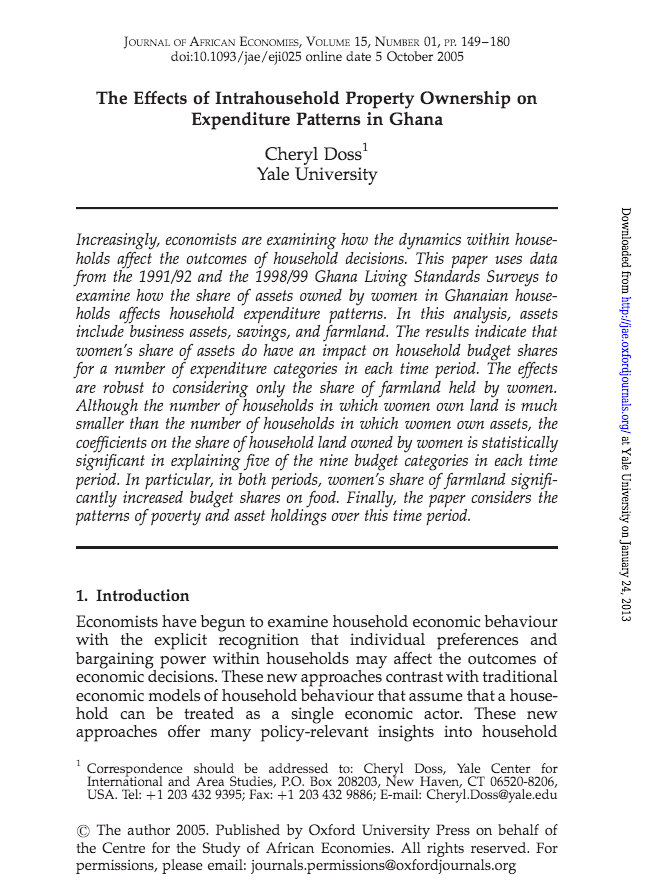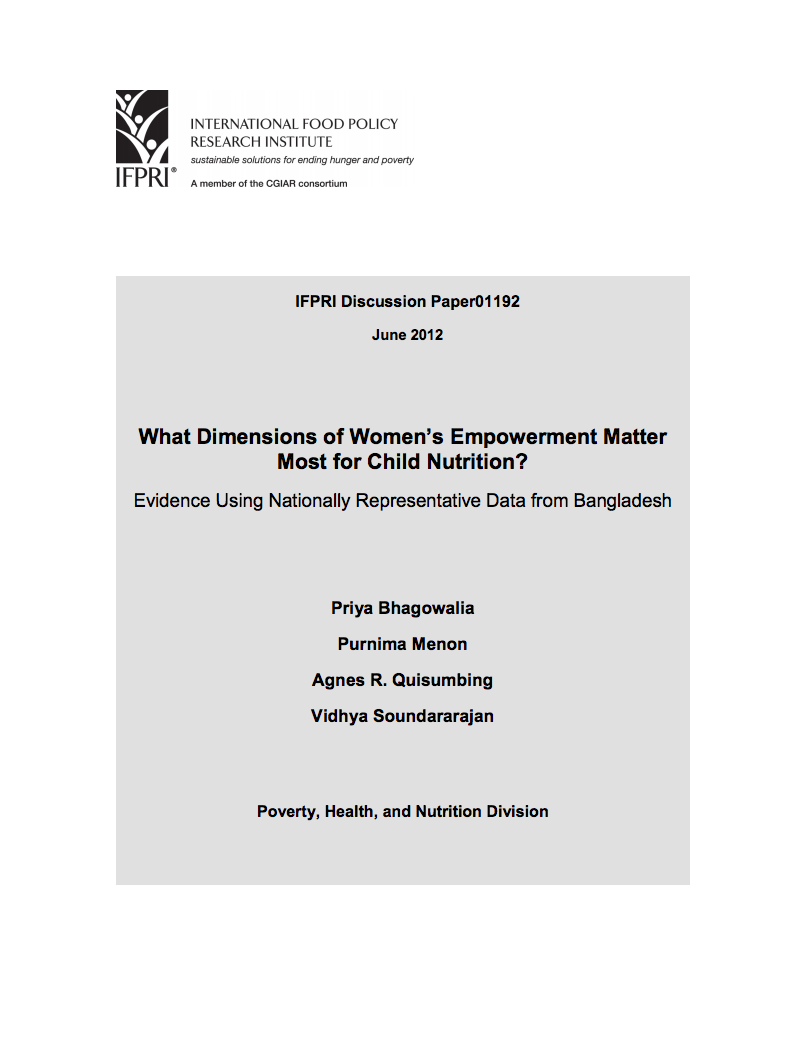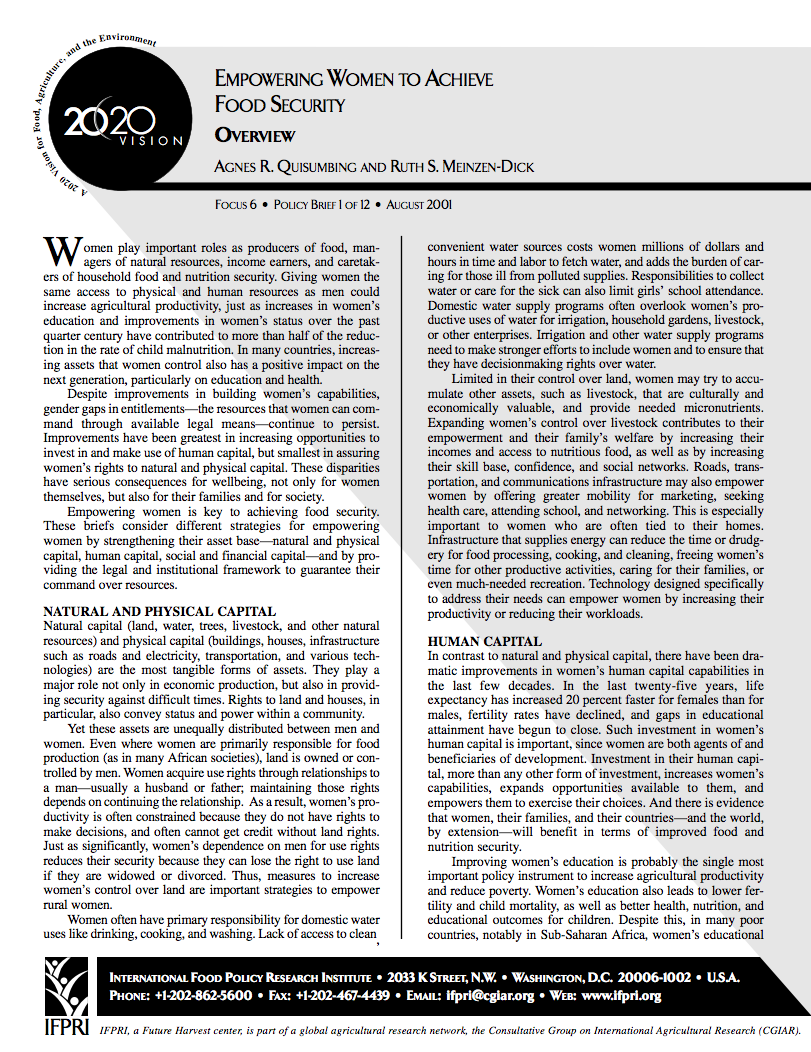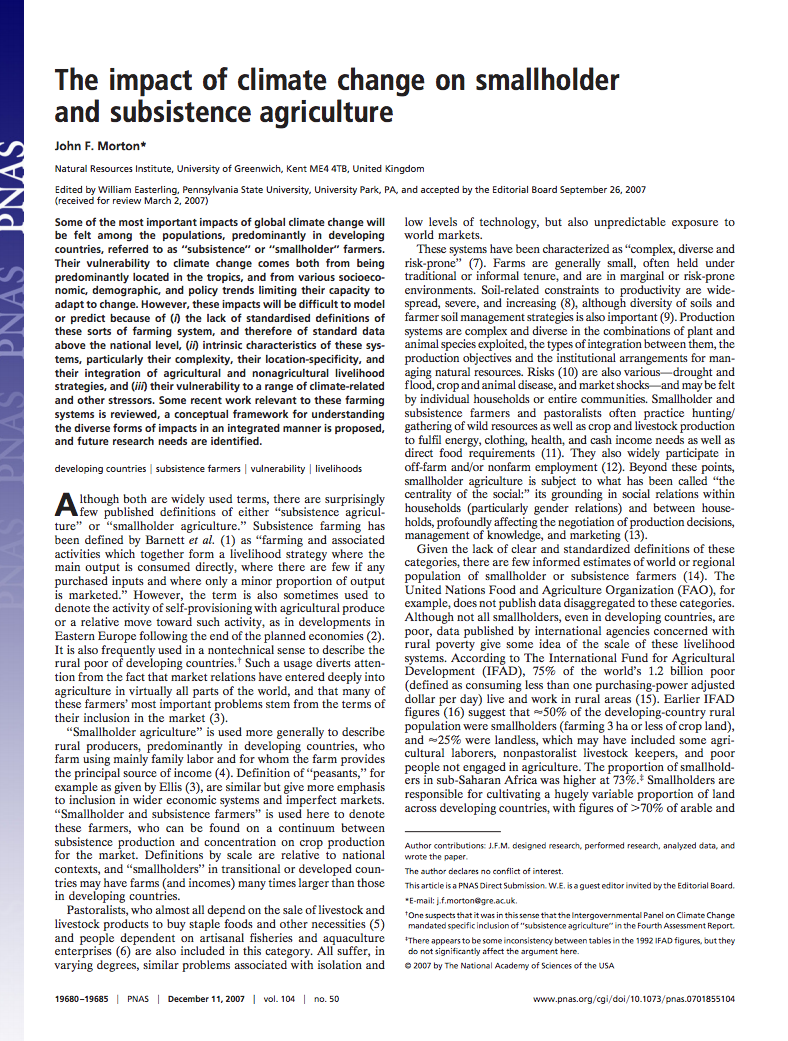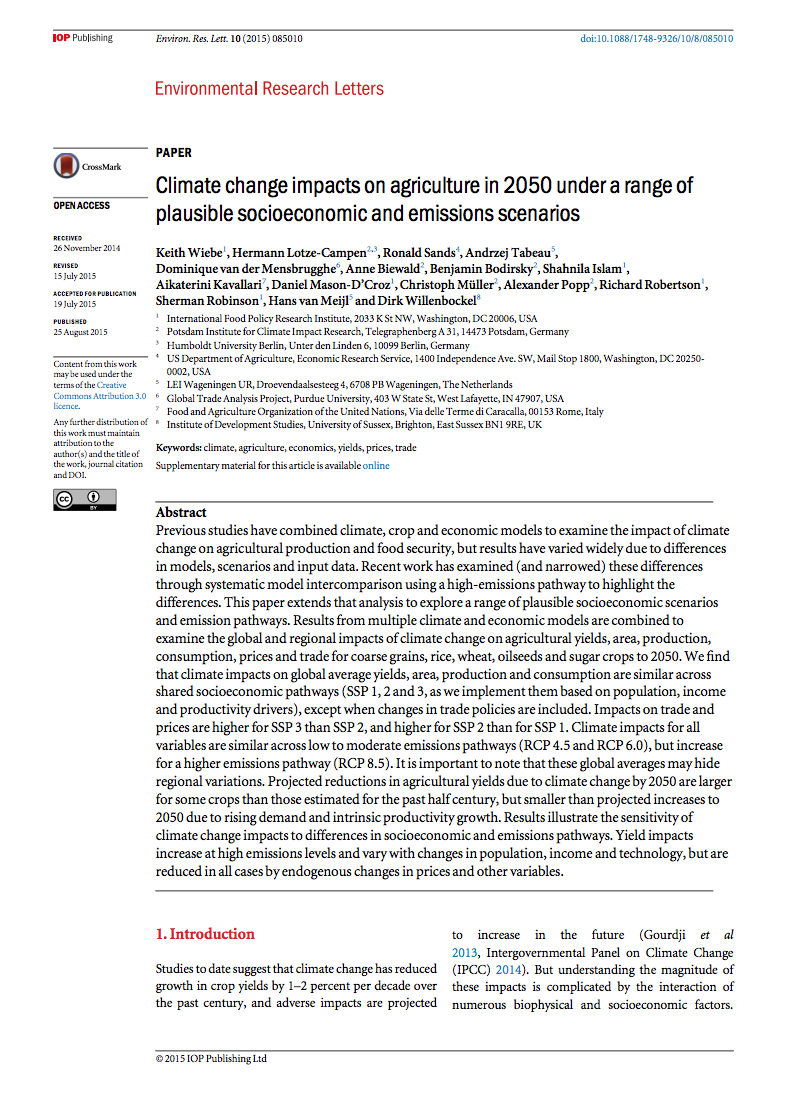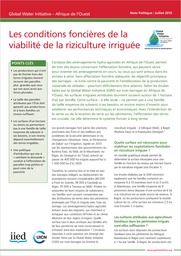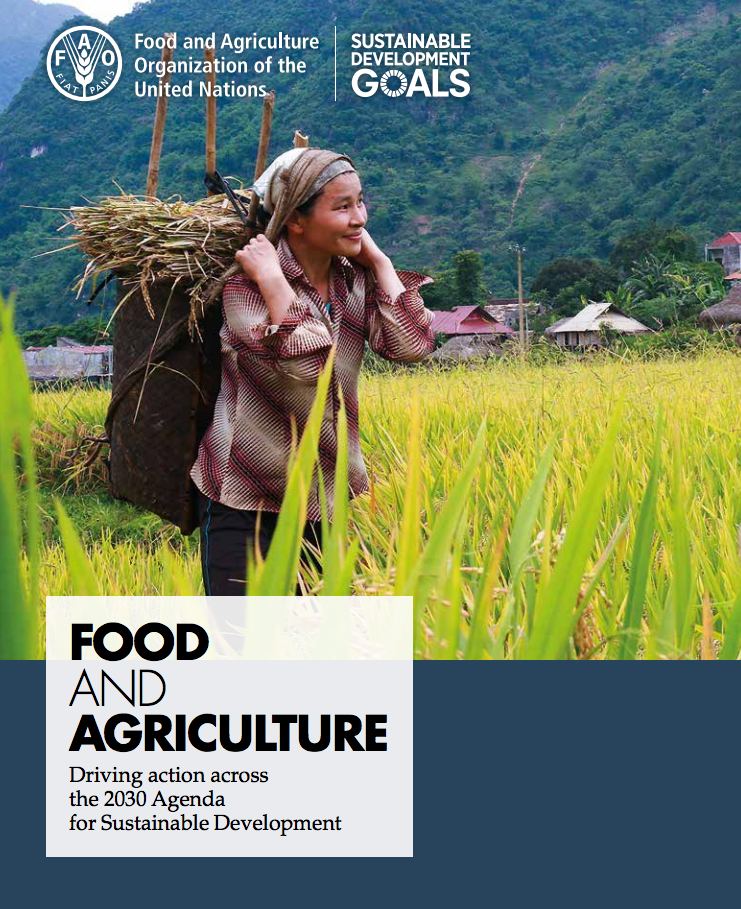Do discriminatory social institutions matter for food security?
In view of the 2012 United Nations Commission on the Status of Women’s thematic focus on rural women’s empowerment, the gender team at the Development Centre has launched an issues paper, “Do discriminatory social institutions matter for food security?”.

